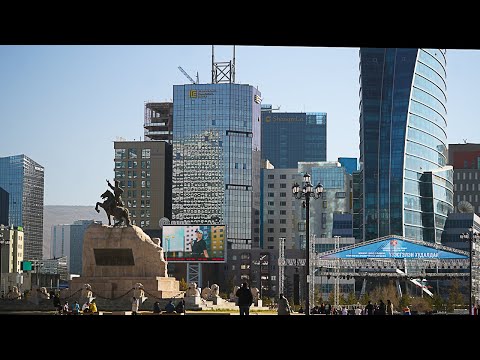
Ulaanbaatar, the capital and largest city of Mongolia, stands as a vibrant testament to the country’s rich history and its rapid modernization. Nestled in the valley of the Tuul River and surrounded by four sacred mountains, Ulaanbaatar is not only the political and economic heart of Mongolia but also a cultural epicenter with deep nomadic traditions. This travel video guide takes you through a captivating journey across Ulaanbaatar, showcasing its historical sites, bustling markets, and tranquil natural landscapes.
## A Blend of Old and New
The city tour kicks off in Sukhbaatar Square (recently renamed Chinggis Square), a central hub named after the revolutionary hero Damdin Sukhbaatar who declared independence from China in 1921. The square is dominated by an impressive statue of Genghis Khan, Mongolia’s legendary founder, flanked by other important political buildings like the Mongolian Parliament. This area provides not only a context for Mongolia’s past but also a snapshot of its thriving governance.
## Historical Richness
A visit to Gandantegchinlen Monastery offers a serene retreat from the urban hustle. One of Mongolia’s most important Buddhist monasteries, it houses hundreds of monks and features stunning religious artifacts, including a majestic 26.5-meter-high statue of Megjid Janraisig. This site offers insight into the spiritual life that is still very much alive in Ulaanbaatar.
For history enthusiasts, the National Museum of Mongolia is an essential stop. The museum provides an extensive overview of Mongolian history from prehistoric times to the present day, highlighting artifacts from various eras such as the Great Mongol Empire and Soviet influence.
## Cultural Immersion
No tour to Ulaanbaatar would be complete without experiencing its lively cultural scene. The Zanabazar Museum of Fine Arts showcases exquisite Mongolian art pieces ranging from ancient sculptures to contemporary paintings. Meanwhile, visitors can enjoy performances at the Mongolian State Opera and Ballet Theatre or participate in local festivals that often feature horseback riding displays, archery competitions, and traditional wrestling.
## Modern Touches
As you move further from the center, you encounter Ulaanbaatar’s modern side with its thriving business district characterized by glass skyscrapers and bustling shopping centers like Shangri-La Mall. The contrast between traditional ger (yurt) districts and these modern structures highlights how Ulaanbataar is straddling epochs.
## Culinary Delights
Exploring Ulaanbataar’s culinary offerings provides another layer to understanding this diverse city. From enjoying buuz (Mongolian dumplings) at a local ger restaurant to savoring international cuisine at upscale eateries near downtown UB City Mall – there’s no shortage of dining options to suit any palate.
## Nature Respite
Lastly, for those wanting to escape urban life for a few hours should visit Gorkhi-Terelj National Park just outside Ulaanbataar – accessible for day trips providing opportunities for hiking or horseback riding amid stunning landscapes featuring granite mountains and tranquil rivers.
This travel video not only captures all these facets through vivid imagery but also adds personal anecdotes from locals and tourists alike which bring out even more colorfully what it means to experience Ulaanbataar firsthand.
In conclusion, whether you are drawn by history or eager for new culinary adventures; whether you want to delve into religious tranquility or seek an adrenaline rush; Ulaanbataar has something special waiting just for you! With such diversity enshrined within its confines makes it clear why this city remains at heart one unforgettable destination on any traveler’s itinerary when visiting Mongolia.
